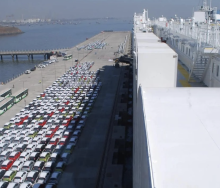South African fuel prices have experienced record high increases over the past three years despite the government not increasing the General Fuel Levy or Road Accident Fund (RAF) levy.
And motorists must brace for further fuel price hikes next month according to the latest data released by the Central Energy Fund (CEF) this week.
Commenting on unaudited CEF data the Automobile Association (AA) noted that unleaded 93 petrol inland cost R21.51 cents per litre (c/l) in May 2022 and increased to R23.01 in May 2023.
According to current CEF data this price will again increase by 37c/litre in May, pushing the price close to R25.15 c/l.
“The outlook for unleaded 95 inland is not much better with the CEF data showing an increase of 38 c/l.
“This will push the price of high-octane fuel to around R25.50/l, higher than that R25.42 seen in August 2022, but not quite the record price of R26.74 in July that year,” the AA said.
Despite this bad news, diesel is set to decrease by 35c/l while illuminating paraffin is also set to come down by 28c/l.
“The decrease to diesel prices is especially welcome as it will not result in higher input costs across various sectors, and this won’t be a driving factor in consumer prices increasing,” the AA said.
A review of the data shows that the expectant increases in this cycle is a result of fluctuations in international product prices that took a sharp upward trajectory at the beginning of the month.
The relative stability of the rand against the US dollar in the early part of the month is contributing only a small margin to the expected increases.
“However, with tensions ramping up in the Middle East, the local currency could be under significant pressure going into the last two weeks of April and could have a more significant impact on local fuel prices in May.
“At this stage it’s important to keep an eye on that indicator as we head into the new month,” the AA said.
The association reiterated its call for a review of the fuel price structure to establish if any components within the current pricing model can be revised by the Department of Mineral Resources and Energy to mitigate rising costs.













